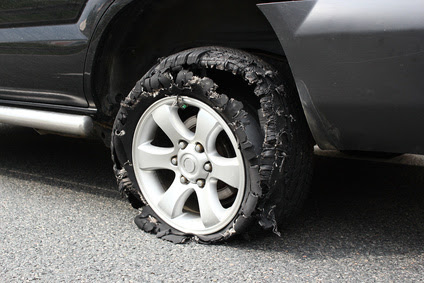
How to change a tire, benefits of run-flat tires
How to change a tire – Changing a tire might not be the most pleasant thing, but with just a little bit of preparation you can be wasting far less time. But such tires are gaining in popularity with drivers who would rather not worry so much about what’s out there on the road. This blog will let us know how to change a tire, and briefly explain the benefits of run flat tires.
How to Change a Tire: A Step-by-Step Guide
Anyone, being a car owner is quite a dream and it’s not unusual to find yourself and your car stuck on the side of the road with a flat tire, but this doesn’t have to put you off you road trip. Here’s a simple guide to help you change a tire safely and efficiently:
- Find a Safe Location
If you are driving when that flat occurs, slow down until you are stopped and then get to the side of the road. Just make it’s in a place that you aren’t right in the middle of, like a parking lot or maybe on the side of a road that isn’t a highway. Pull over, take your car out of drive and set the brakes off, flick on your hazard lights to warn other drivers. - Gather Your Tools
Preparation is always the best, so don’t forget about everything you need to start. Most cars, however, have a spare wheel (or a space saver as it’s often called), jack and lug wrench. In addition, it is a good idea to always have gloves, a tire gauge and flashlight in your car. - Loosen the Lug Nuts
Pop up the air out of the car and just take out like the lug nut wrench, but don’t take them off. As long as the tyre is still in contact with the ground they unscrew outwards to prevent the wheel from spinning. - Lift the Vehicle
Jack it up and place it where you can place the jack under your vehicle, if the car is a saloon car then you will jack it up at the side of the car or beneath the car frame. In that case, jack the car up enough that the flat tire is not touching the ground at all. - Remove the Flat Tire
To remove the loosened lug nuts, completely lift the vehicle, and very carefully, remove the flat tire. Place the lug nuts in a eliminate origin there are non ones accessible to misplace the lug nuts. - Install the Spare Tire
Mount the spare tire on the wheel hub in front of the lugs nuts so that the holes of the tire will fit to the lugs nuts. You now need to use your hands to screw each one back onto the posts, but don’t over tighten. - Lower the Vehicle
Lower jack slowly until spare wheel is a little off the ground. But when you’re done nuts, when you take the jack away, when you have to put the nuts back on and tighten them in the star so you have equal pressure on all the nuts. - Check the Tire Pressure
By the time you leave town, though, use a tire gauge to verify the pressure in the mounted spare tire. For a worst example of them, using them as a matter of course on flat tires is not a good idea and you will find that most of them will have to be filled up with 60 PSI if you press service tire too often, unless your car manufacturer manual dictates otherwise.
Believe it or not, this also means that you won’t have to worry with a flat tire anymore knowing how to change one.
What the run flat tires have to offer.
Run flat tires are increasingly used because they afford a host of advantages that contribute to increased safety and convenience. Here’s why you should consider upgrading to run-flat tires:
- Drive Safely After a Puncture
The biggest and most important benefit of run flat tyres is the ability to actually drive on a punctured tyre. Therefore, these tires are designed to help it bear your weight up to a certain distance (not more than 50 miles) and speed so that you give a ride to reach the workshop to change your tire. - Get Rid of the Spare Tire
Since run flat tires can keep going even if they get a puncture most cars that have them don’t even have a spare wheel. This means you don’t have to find some time to change a wheelchair due to a puncture, and you are also able to spare some space in your car’s boot and at the same time reduce your car’s weight in general. - Improved Safety
Run flat tires are a good safety feature that can prevent a troubling and possibly lethal blowout while travelling at high speed. If you get a puncture, you won’t be pressured into suddenly deflating your tire and, thus, be able to steer your car and avoid an accident. The safety is increased, hence this will come in handy in highway and crowded roads. - Peace of Mind
It is comforting though not to worry about a flat tyre when driving in the dark or in the bush or even at night. Run flat tires allow you to continue on your way to a location that you can have the tire repaired versus a flat tire on the highway and now what do you do? - Durability
The longevity and the ability to go the distance of run flat tires doesn’t compare to those of standard tires. In the long run, it will mean you will not need to replace it quite as often as you would for flimsy ones.
Conclusion – How to change a tire
Perhaps you should know how to change a tire, but if you want a little extra safety and convenience, run flats are pretty great. With these tires, you can drive on after a puncture and you don’t have to worry about anything else needing fixed by the side of the road. If you chose to use standard tyres or run flats then you will be prepared and can face the reality of tyre problems, should you have to.
If you want more information or you need professional advice on how to change your tires or others tire service tips, feel free to contact Coastal Motor Advisory.


